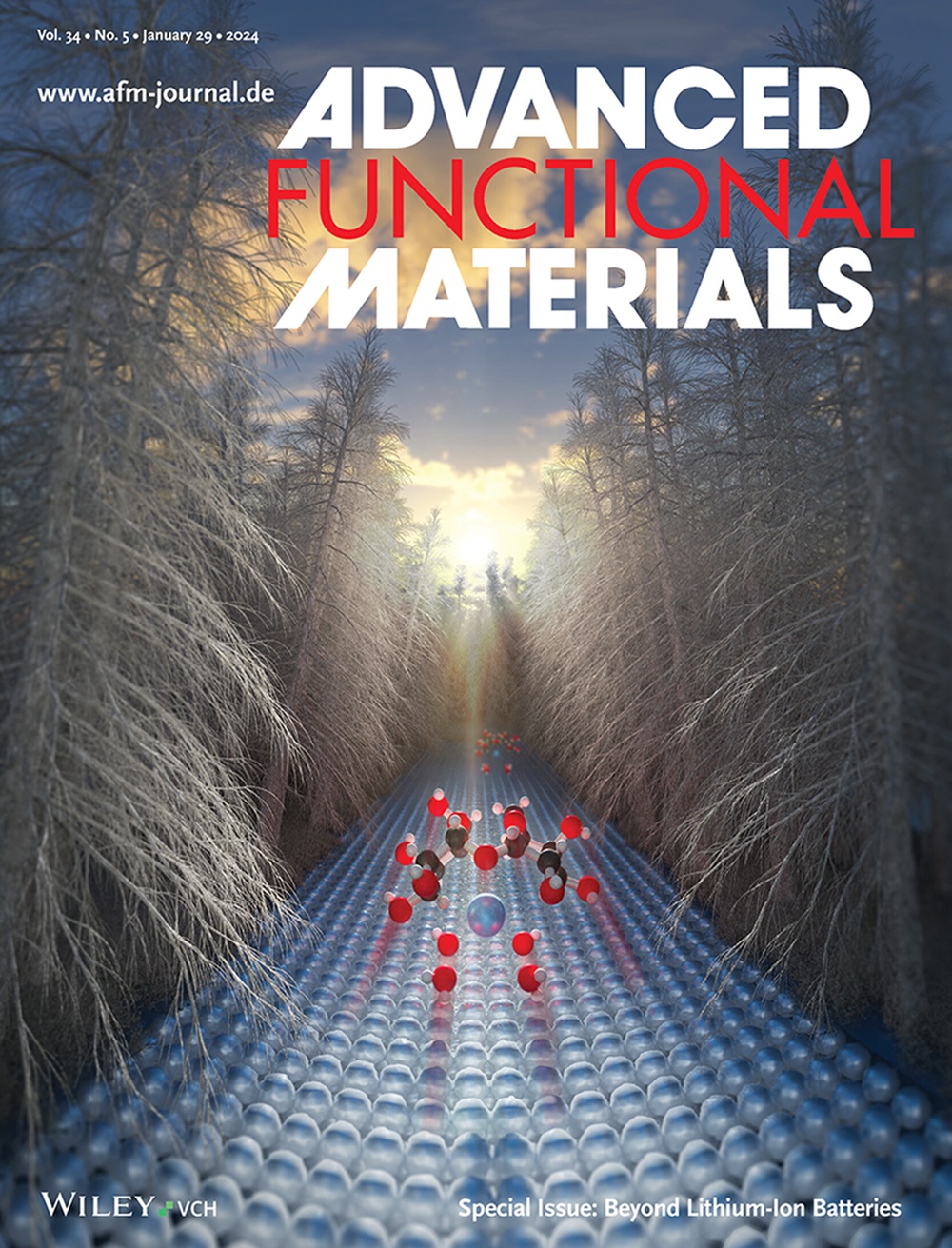金属掺杂催化剂的空间约束设计:调节活性位点的电子态以加速锂硫电池中的硫氧化还原动力学
IF 18.5
1区 材料科学
Q1 CHEMISTRY, MULTIDISCIPLINARY
引用次数: 0
摘要
合理且结构合理的电催化剂具有优异的催化活性和吸附能力,是有效解决锂硫电池(LSBs)面临的挑战的关键。本文利用空间约束设计和掺杂工程诱导的电子态调制的协同效应抑制了穿梭效应,实现了高效催化多硫化物转化。通过自组装和硒化策略在三维MXene中空微球上原位形成了ni掺杂的CoSe2纳米颗粒。中空结构提供了空间限制和物理屏障,减轻了多硫化物的穿梭,同时防止了MXene的自堆积,确保了Ni-CoSe2纳米粒子的最大暴露,提供了额外的活性位点,增强了它们的吸附性能。电化学实验和原位XRD分析证实了这些发现,表明使用功能电催化剂可以显著提高lsb的速率能力和循环稳定性。本研究为利用结构构建和电子态调制的协同效应开发高性能lsdb提供了一条有价值的途径。本文章由计算机程序翻译,如有差异,请以英文原文为准。

Spatial Confinement Design with Metal-Doped Catalysts: Modulating Electronic-State of Active Sites for Accelerating Sulfur Redox Kinetics in Lithium-Sulfur Batteries
The rational and well-structured construction of electrocatalysts with exceptional catalytic activity and adsorption capability is essential for effectively addressing the challenges faced by lithium-sulfur batteries (LSBs). In this paper, the synergistic effect of spatial confinement design and doping engineering-induced electronic-state modulation is leveraged to suppress the shuttle effect, and high-efficiency catalysis for polysulfide conversion is achieved. The Ni-doped CoSe2 nanoparticles are in situ formed on a 3D MXene hollow microsphere via self-assembly and selenization strategies. The hollow structure provides spatial confinement and serves as a physical barrier, mitigating the polysulfide shuttle while the prevention of MXene self-stacking ensures maximal exposure of the Ni-CoSe2 nanoparticles to provide additional active sites and enhances their adsorption properties. These findings are corroborated by electrochemical experiments and in situ XRD analysis, demonstrating significantly improved rate capabilities and cycling stability of LSBs utilizing the functional electrocatalyst. This study presents a valuable pathway for exploiting the synergistic effect of structural construction and electronic-state modulation to develop high-performance LSBs.
求助全文
通过发布文献求助,成功后即可免费获取论文全文。
去求助
来源期刊

Advanced Functional Materials
工程技术-材料科学:综合
CiteScore
29.50
自引率
4.20%
发文量
2086
审稿时长
2.1 months
期刊介绍:
Firmly established as a top-tier materials science journal, Advanced Functional Materials reports breakthrough research in all aspects of materials science, including nanotechnology, chemistry, physics, and biology every week.
Advanced Functional Materials is known for its rapid and fair peer review, quality content, and high impact, making it the first choice of the international materials science community.
 求助内容:
求助内容: 应助结果提醒方式:
应助结果提醒方式:


